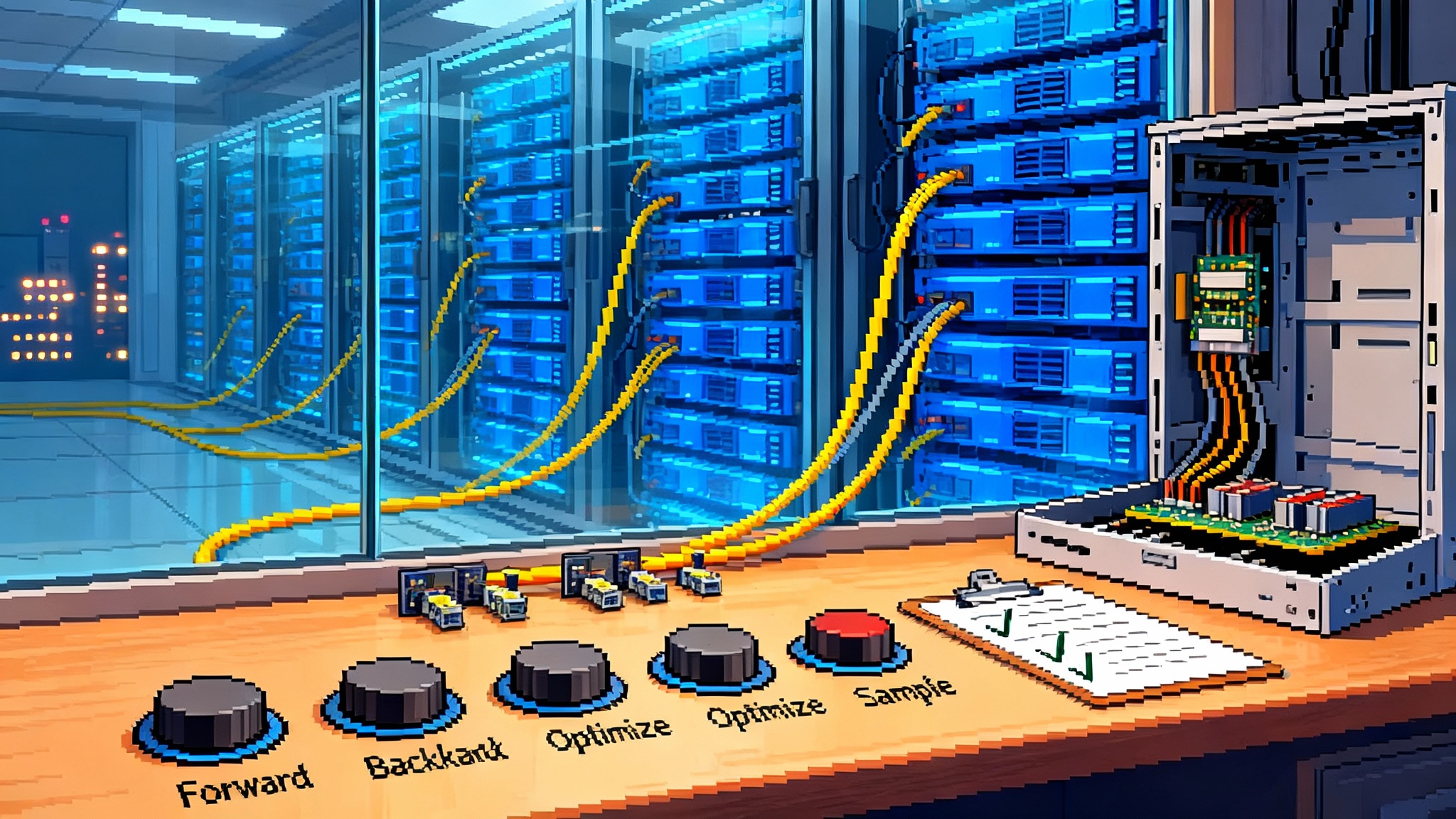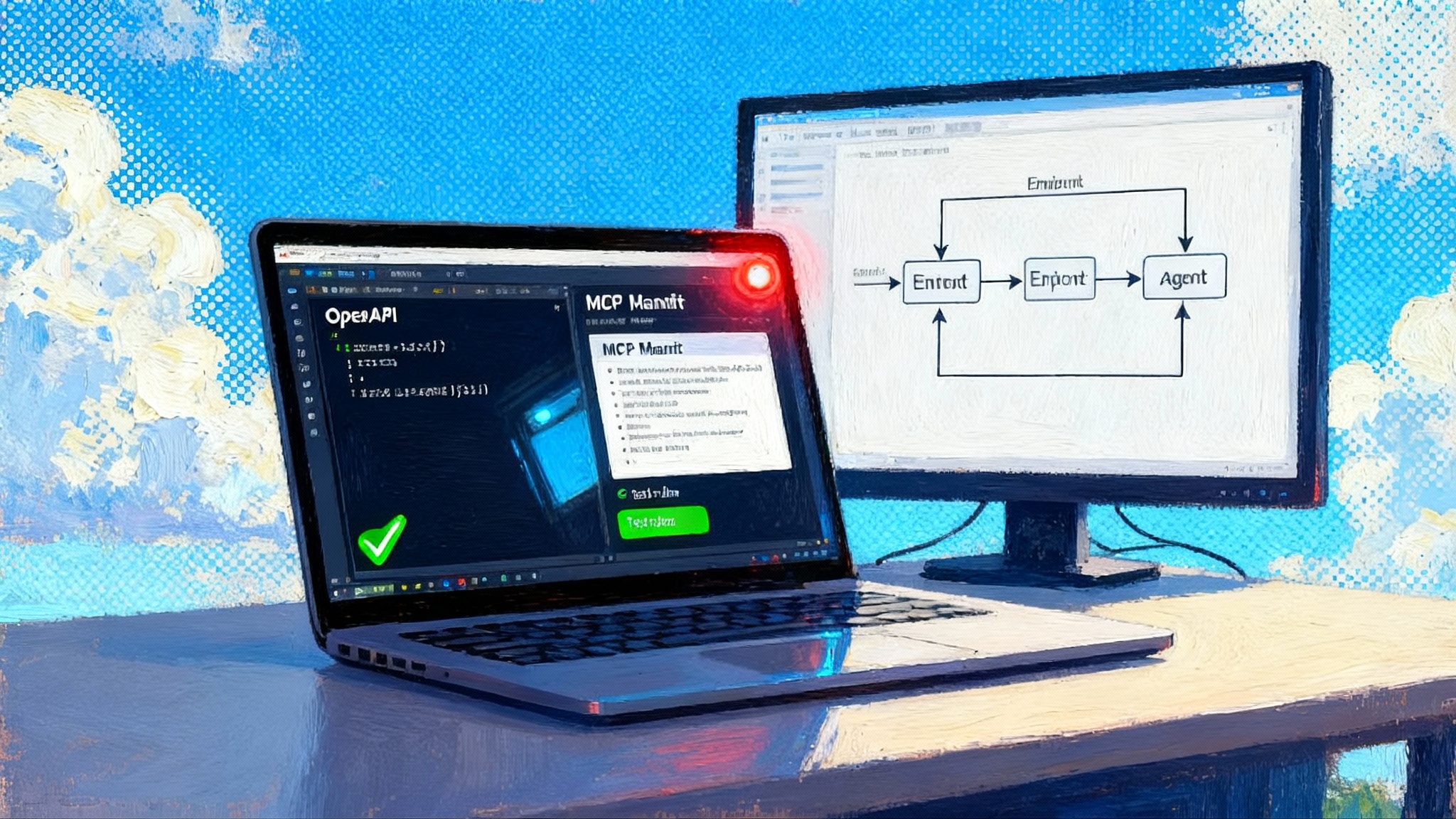Agents Take the Keys: Codi’s AI Office Manager Hits GA
Codi launches an AI Office Manager that plans, schedules, and verifies real work across cleaning, pantry, and vendors. Learn why facilities are the first beachhead and use our 30 day pilot playbook to prove value.

The news: autonomous office ops moves from demo to daily life
On October 21, 2025, Codi publicly launched an AI Office Manager that runs the logistics of a physical workplace: cleaning schedules, pantry restocking, vendor coordination, and move-in setups. The company previously matched tenants to flexible spaces, then learned the manual vendor work inside those offices. Now it says the repetitive coordination can be handled by an agentic system that acts like a reliable office manager who never sleeps. Independent coverage confirmed the pivot and timing, noting that this product coordinates the physical office rather than just messaging about it, as TechCrunch reported the launch.
Codi’s positioning matters beyond one startup. It formalizes a pattern for agents that manage atoms, not only bits. The model looks like this: a planner that owns outcomes, a budget, a network of vendors, verification loops, and an audit trail strong enough to satisfy finance and facilities leaders. If you have followed how agents are escaping the chat window in other domains, such as our look at how agentic checkout goes live, this launch is the same tectonic shift touching a very tangible surface area.
Why facilities and vendor coordination is the first beachhead
Facilities management looks messy from the outside. Inside, it is one of the most structured domains in operations. Four features make it ideal for autonomous agents.
1) Clear service level agreements
Janitorial, security, plant care, and coffee delivery all run on explicit promises: what gets done, how often, and to what standard. Restrooms are disinfected nightly. Floors are mopped twice a week. Trash is removed daily. Coffee beans are restocked when inventory drops below a par level. These rules are codifiable, so an agent can plan tasks against calendars and vendor contracts, then check that work happened.
2) Structured outcomes you can verify
Did the task complete on time and to spec? There are simple signals: timestamped vendor confirmations, photos with geotags, sensor readings from smart bins, and spot-check surveys. Agents can translate those signals into pass or fail without a debate about taste or tone. That makes the domain deterministic enough for automation.
3) Repeatable workflows with seasonal patterns
Cleaning, restocking, and minor maintenance repeat weekly. Seasonal events repeat yearly. Agents thrive on recurrence because they can learn from each loop, tighten schedules, and reduce waste. That rhythm also reduces the surface area for surprises.
4) Existing vendor graphs
Most offices already have a graph of relationships: cleaners, internet providers, furniture installers, plant services, snack distributors, locksmiths, electricians. Codi’s own journey went from a marketplace to operating offices and vendors, then to software that automates those relationships. A domain with known suppliers and predictable tasks gives agents a runway to deliver value on day one.
The stack: procurement APIs, scheduling, and verification loops over an LLM planner
Peel back the covers and a pragmatic architecture emerges. It is not mysterious. It is tightly coupled to real constraints: budgets, calendars, and proof of work.
- Planner layer: a large language model plans tasks and vendor requests given office policies, budgets, and calendars. It converts a goal like keep kitchen stocked into discrete jobs.
- Procurement connectors: integrations to payment rails and marketplaces. Think corporate cards, invoice ingestion, and catalogs for supplies and consumables. The agent can issue small purchases within budget and route anything larger to a human.
- Scheduling fabric: two-way sync with vendor calendars and internal events. The agent predicts conflicts, moves jobs, bundles errands, and avoids running a vacuum during all-hands.
- Verification loop: the agent asks vendors for completion proof. That includes photos, checklists, or device signals. It reconciles receipts against work orders and flags anomalies. If something looks off, it opens a case and pings a human.
- Policy guardrails: budget ceilings, contract terms, building hours, and compliance requirements. These constraints steer the planner and prevent creative but noncompliant solutions.
- Observability and audit: every plan, decision, and message is logged with an immutable event record. Finance and compliance teams can reconstruct who authorized what and why.
This is the same pattern transforming customer support agents and sales assistants, but here success criteria are simpler. Did the floor get cleaned for a target amount by Tuesday at 7 am? Did supplies arrive before they ran out? When the stakes are outcome delivery rather than linguistic persuasion, agents can be judged by objective metrics.
It also matches what we are seeing in adjacent layers of the stack. The rise of memory primitives that let agents recall context across long-running jobs is key to reliability, as argued in the memory layer moment. And at the infrastructure level, teams building self-assembling execution scaffolds are making it easier to plug planners into tools and protocols, a trend explored in meta agents hit the stack.
Proof points from the launch
Codi attributes material savings to this approach and cites early adoption among tech companies. The company claims hundreds of hours saved per year and up to 83 percent lower overhead, with one data point that it booked one hundred thousand dollars in annual recurring revenue within five weeks of its beta. These are vendor-reported figures, but they show traction and a willingness from customers to pay for outcomes, not dashboards, as the Codi press release on ARR details.
Near-term roadmap: from pantry to compliance and capex
If you map tasks by complexity and risk, you get a sequence that offices can follow over the next year.
- Pantry and supplies: track par levels, place recurring orders, and bundle deliveries. The agent reduces stockouts and over-ordering and proves its worth quickly.
- Cleaning and vendor scheduling: standardize work orders and frequencies. The agent handles shifts and holiday schedules, escalates misses, and keeps costs predictable.
- Light maintenance triage: coordinate routine fixes like lamp replacements, clogged sinks, and door hinges. The agent uses photos and short videos to classify requests, then dispatches the right trade.
- Visitor and logistics coordination: sync with calendars to prepare rooms, badges, and A or V checks before big meetings. The agent becomes a backstage coordinator.
- Compliance and safety checks: run weekly inspections with photo verification, track extinguisher tags, update logs for occupational safety rules, and schedule required vendor visits. Simple checklists and timestamped proofs make this feasible.
- Capital expenditure planning: aggregate usage data, incident rates, and vendor performance to recommend investments like higher-capacity coffee machines, soundproofing, or badge system upgrades. The agent drafts options with cost, payback, and disruption windows.
At each step, the agent owns an outcome and a budget. Humans retain final authority for riskier or irreversible decisions.
How agent-run ops differ from legacy workplace tools
Most workplace software falls into one of two buckets.
- Ticket routers: they accept requests and route them. Resolution still depends on a human coordinator who juggles calendars, vendors, and receipts.
- Real estate and space planning suites: excellent at leases, headcount forecasting, and floor plans. They often stop at the office door when it is time to mop a floor or restock the fridge.
Agent-run ops collapse the middle. Instead of managing tickets and dashboards, you define policies and budgets. The agent translates them into work, executes, and shows you proof. If a restock costs more than usual, it explains why. If a vendor misses two weeks in a row, it escalates and proposes alternatives. The software shifts from a database of records to a doer of work.
This is not a silver bullet. It is a different operating model where the planner is autonomous within clear boundaries. That shift has concrete implications for contracts, compliance, and trust.
Risks and how to manage them
- Hallucinated work orders: an agent might infer a task without explicit approval. Mitigation: enforce signed approval tokens for any new vendor engagement and require itemized line items from catalogs or templates.
- Budget drift: small purchases can add up. Mitigation: set daily and monthly budget caps by category and vendor, with automatic cutoffs and real-time alerts.
- Liability in the physical world: a mis-scheduled repair can cause downtime or safety incidents. Mitigation: classify tasks by risk level. Require human approval for anything that alters safety systems, electrical, or structural elements.
- Vendor misrepresentation: a contractor might claim completion without doing the work. Mitigation: enforce photo and sensor proofs tied to location and time, with random human audits. Repeat offenders get auto-downgraded in the vendor pool.
- Audit gaps: if you cannot reconstruct decisions, compliance and finance will block rollouts. Mitigation: log every plan, message, and transaction with unique identifiers. Export weekly digests to your general ledger and compliance archive.
- Data privacy: building access logs, camera stills, and employee schedules are sensitive. Mitigation: tokenize personal data, restrict raw media access, and set short retention policies for verification artifacts.
A 30 day pilot playbook
You can prove or disprove the value of agent-run office ops in one month. Treat it like a controlled experiment, not a procurement cycle.
Week 1: scope and guardrails
- Define outcomes: for example, zero stockouts, 95 percent on-time cleaning before 8 am, and under 2 percent order returns. Write them as testable statements.
- Set budgets and thresholds: establish ceilings per category and per day. Any single purchase above 500 dollars requires human approval. Any recurring contract longer than three months requires human approval.
- Classify tasks by risk: green tasks like pantry orders are fully autonomous. Yellow tasks like minor repairs require automatic notification. Red tasks like electrical work require human sign-off.
- Name escalation paths: specify who gets paged when something fails or a budget is exceeded.
Week 2: wire-up and observability
- Connect procurement: corporate card with virtual numbers, invoice inbox, and catalog access for snacks and cleaning supplies.
- Connect scheduling: calendars for office events and vendor schedules. Block quiet hours and high-traffic windows.
- Instrument verification: require itemized receipts, photo proofs with geotags, and automated receipts matching. Create a daily digest with anomalies.
- Stand up an event log: store plan, action, proof, and cost for every task. You should be able to answer what happened yesterday and why in two minutes.
Week 3: controlled autonomy
- Start with pantry and recurring cleaning: let the agent operate within budgets and thresholds. Observe without intervening unless a threshold triggers.
- Run spot checks: sample five tasks per week. Compare photos and receipts to expectations. Document misses and adjust prompts, checklists, or vendors.
- Introduce minor maintenance triage: let the agent classify requests and propose vendors, but require human approval to dispatch.
Week 4: measure and make the call
- Compute cost to serve: total monthly spend on vendors plus agent subscription plus incident costs. Divide by tasks closed and by square feet.
- Compare to fractional office manager costs: salary or hourly rate plus overhead, software, and time spent. Do not forget the hidden cost of context switching.
- Review reliability: on-time completion rate, first-time-right rate, and anomaly rate. Track vendor performance migration from red to green over time.
- Decide on expansion: if stockouts dropped to near zero and cleaning is predictably on time within budget, expand autonomy one notch and add the next capability.
If the pilot underperforms, you still improved documentation, vendor data, and observability. Those assets benefit any operating model.
What to look for in a vendor
- Outcome contracts: vendors should price on outcomes when possible. Pay per visit or per outcome, not just per hour.
- Rich verification: photos, checklists, and sensor integrations should come standard.
- Fine-grained guardrails: per-category and per-vendor budgets, approval rules by risk level, and easy overrides.
- Audit export: daily or weekly event dumps that your finance and compliance teams can ingest without special tooling.
- Vendor graph portability: you own your vendor relationships. You can bring your own vendors, not just the ones in the vendor’s marketplace.
- Safety practices: clear policies for handling keys, access control, and emergency protocols.
From offices to other atoms meet bits domains
The operating pattern on display here translates to other physical domains where tasks are structured and proofs are objective.
- Logistics hubs: agents coordinate dock scheduling, yard operations, and trailer turns with sensors and driver apps. Outcomes are turn time and on-time departures.
- Property management: agents schedule preventive maintenance, meter readings, and unit turnovers, with photo proofs and budget caps per building.
- Clinics and ambulatory care: agents handle room turnover, cold-chain inventory, and preventive equipment checks. Outcomes are compliance scores and time to prepare rooms between patients.
In each case, the agent owns an outcome, not a conversation. The boundary is a budget plus a risk policy. The verification loop ties physical work back to data. Humans move up the stack to handle exceptions, vendor strategy, and the human parts of experience design.
The bottom line
Agents will not replace every facilities professional. They will replace the late nights and constant context switching that make the role hard. Codi’s launch crystallizes a broader shift: moving from tickets and dashboards to autonomous execution with proofs, budgets, and audit trails. If you run a workplace, the path is clear. Start small, verify everything, and give your agent ownership where the outcomes are objective. The first week it will feel like a novelty. The fourth week it will feel like a new normal. And soon, many more places where atoms meet bits will run on agents that own the job from plan to proof.








